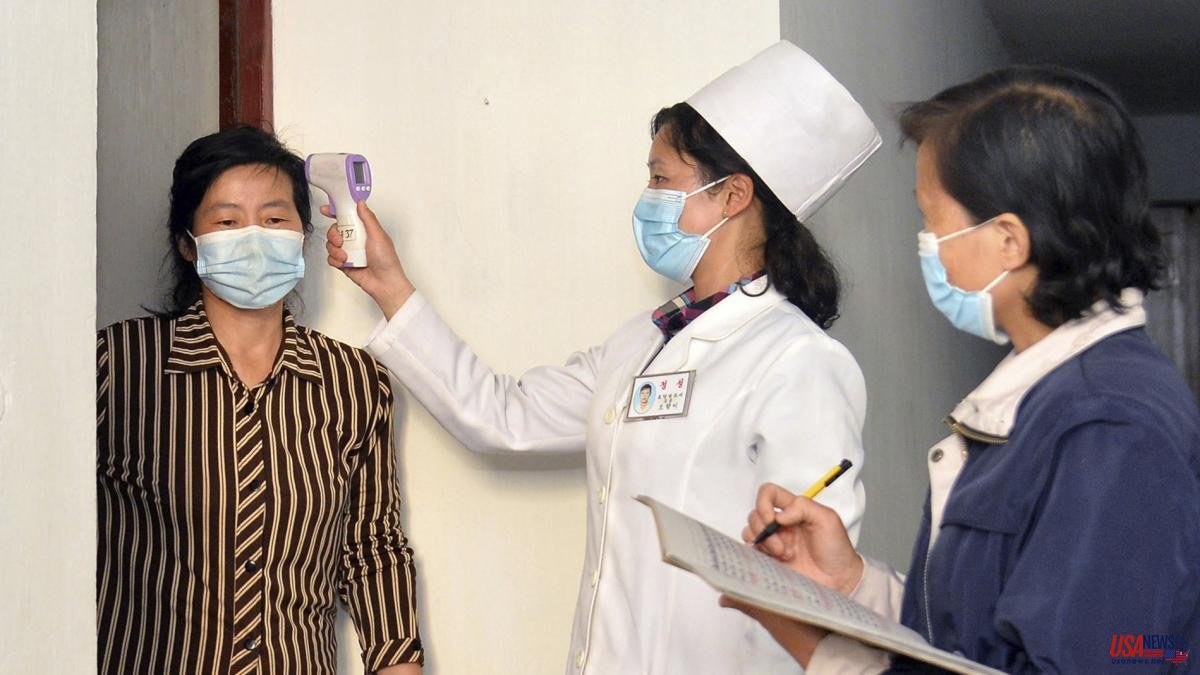The coronavirus is still rampant in North Korea. A week after reporting the appearance of the first cases at the end of April, Pyongyang assured that more than two million people - almost 10% of its population - could be infected with the pathogen. Even so, the regime assured that it is achieving "good results" in its battle against covid-19, while numerous experts question the veracity of the figures reported by the country.
According to the last daily count, the country added some 263,000 cases of fevers potentially linked to covid (the country does not have enough tests to confirm them). In total, 2.24 million people have already contracted these fevers, of which almost 1.5 million have already recovered. In addition, he reported two other deceased people, bringing the total number of deaths to 65.
Official figures point to a very rapid transmission of covid in a country where geographic mobility is very limited due to the limitations imposed by the regime and the lack of infrastructure. According to their data, the number of cases would be falling in the capital while increasing in rural areas.
To deal with it, the regime ordered the confinement of cities and towns and has limited the movement of the population abroad as much as possible. Even so, they themselves recognize that the closure is not total and that agricultural or factory work continues, and there is even a state funeral planned for a recently deceased retired general.
“Even under the maximum epidemic prevention situation, normal production is maintained in key sectors and large-scale construction projects are pushed forward relentlessly. Good results are constantly being reported in the war against the ongoing epidemic," state agency KCNA said.
For its part, neighboring South Korea acknowledges that it is difficult to draw conclusions about the evolution of the pandemic in the north since it is not entirely clear how they are calculating the number of cases.
According to the South Korean Intelligence Service (NIS), many of these "fevers" could be due to cases of measles or typhoid fever that the authorities also count to reassure the population and convey the idea that they are monitoring any potential case. According to their estimates, the peak of the current wave could arrive between the end of this month and the beginning of June.
Analysts such as Martyn Williams, of the specialized page 38 North, assure that the North Korean figures are unlikely to offer an accurate description of what is happening, either by mistake or deliberate manipulation. "I doubt they represent the exact image," he said on Twitter.
Others are directly convinced that the death toll is being manipulated downwards to demonstrate that their response has been effective. “I think they are messing with the statistics,” said Kwak Gil Sup, director of One Korea Center.
Since the first cases were reported, there is great concern about the situation in a country that has not officially administered a single vaccine -it has rejected all the ones that have been offered to date-, has a poor health system and It has sufficient means to deal with the pandemic.
From the state media, those possibly infected are encouraged to take painkillers and fever reducers such as ibuprofen to treat symptoms, as well as amoxicillin and other antibiotics. They have also recommended some home remedies such as gargling with salt water or drinking Japanese honeysuckle or willow leaf tea three times a day.
Most experts believe that Pyongyang, which has rejected offers of humanitarian aid from Seoul and Washington, is already getting supplies from China and possibly accepting shipments from international organizations, although it does not seem interested in receiving vaccines at the moment.
4













